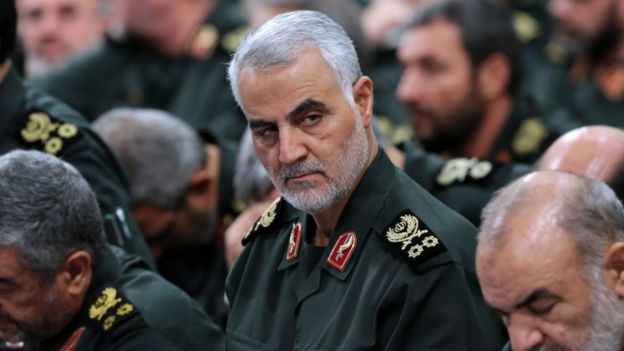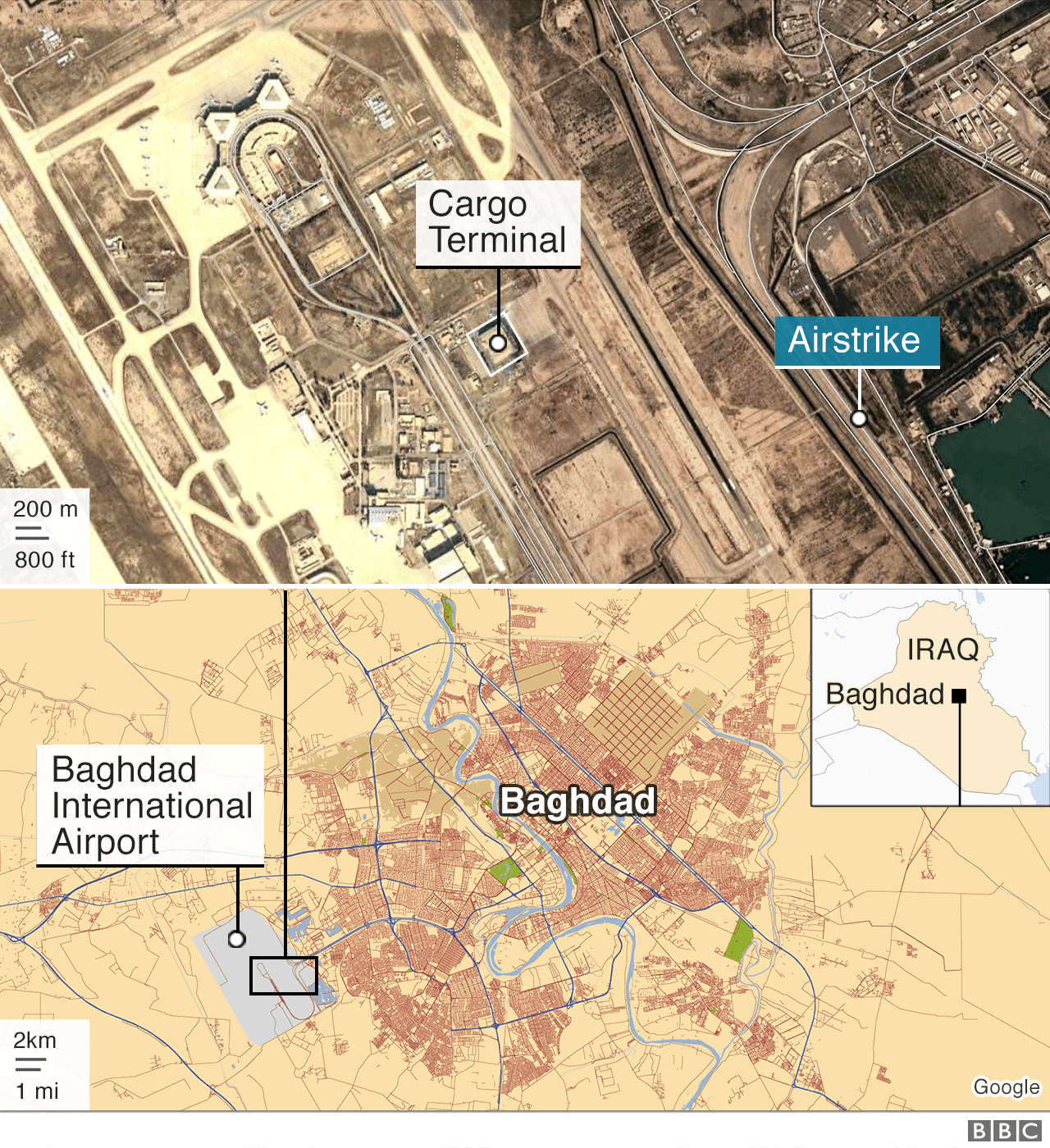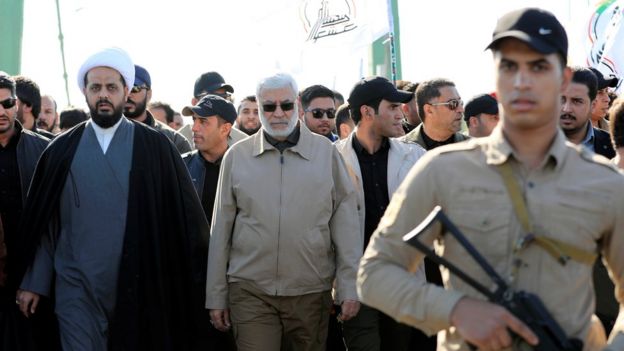Iran’s supreme leader has vowed “severe revenge” on those responsible for the death of top military commander Qasem Soleimani.
Soleimani was killed by an air strike at Baghdad airport early on Friday ordered by US President Donald Trump.
The 62-year-old spearheaded Iranian operations in the Middle East as head of the elite Quds Force. Mr Trump said he caused millions of deaths.
The killing marks a major escalation in tensions between Washington and Tehran.
Soleimani was widely seen as the second most powerful figure in Iran, behind Supreme Leader Ayatollah Khamenei. The Quds Force, an elite unit of the Iranian Revolutionary Guard Corps (IRGC), reported directly to the ayatollah and Soleimani was hailed as a heroic national figure.
Under his 21-year leadership of the IRGC, Iran bolstered Hezbollah and other pro-Iranian militant groups in Lebanon; expanded its military presence in Iraq and Syria; and orchestrated Syria’s offensive against rebel groups in that country’s long civil war.
 The Pentagon confirmed that US forces had killed Gen Soleimani
The Pentagon confirmed that US forces had killed Gen SoleimaniUS Secretary of State Mike Pompeo said the US wanted to de-escalate the situation, but that the strike was “lawful” and “saved lives”. He told Fox News: “We do not seek war with Iran but we will not stand by and see American lives put at risk.”
Meanwhile, tens of thousands of Iranians have been holding rallies in Tehran and other cities, denouncing what they call US crimes.
Iran’s Supreme Leader Ayatollah Ali Khamenei said “severe revenge awaits the criminals” behind the attack. His death would double “resistance” against the US and Israel, he added.
He also announced three days of national mourning. The ayatollah would lead prayers at the general’s funeral on Saturday morning, Iranian media quoted Soleimani’s family as saying.
Later, the Supreme National Security Council, Iran’s top security body, said the US would be held responsible for its “criminal adventurism”.
“This was the biggest US strategic blunder in the West Asia region, and America will not easily escape its consequences,” it said in a statement.
Foreign Minister Javad Zarif called the attack an “act of international terrorism”.
Gen Esmail Qaani, deputy head of the Revolutionary Guards’ foreign operations arm, was named as Soleimani’s successor by Ayatollah Khamenei.
In other reaction:
- Iraq’s Prime Minister Adel Abdul Mahdi condemned the “assassination” of Soleimani as a “dangerous escalation” of regional tensions
- Russia said the attack was a “murder” and a “reckless step” by the US
- Lebanon’s Iran-backed Hezbollah group called for Soleimani’s death to be avenged
- Israel’s Prime Minister Benjamin Netanyahu said the US had the “right ” to defend itself and praised President Trump for acting “swiftly, forcefully and decisively”
- A spokesman for UN Secretary General Antonio Guterres said the world “cannot afford” another Gulf war
How has the US responded?
TBhe US has called the commander and the Quds Force terrorists, holding them responsible for the deaths of hundreds of US personnel.
President Trump, who was in Florida at the time of the strike, tweeted an image of the American flag shortly afterwards.
Tweeting again on Friday, Mr Trump said Soleimani had “killed or badly wounded thousands of Americans… and was plotting to kill many more” and “should have been taken out many years ago”.
“While Iran will never be able to properly admit it, Soleimani was both hated and feared within the country,” he said.
A statement from the Pentagon – the headquarters of the US Department of Defense – said Soleimani had been “developing plans to attack American diplomats and service members in Iraq and throughout the region”.
“This strike was aimed at deterring future Iranian attack plans,” it added.
How did the strike take place and who was killed?
Soleimani and officials from Iran-backed militias were leaving Baghdad airport in two cars when they were hit by several missiles from a US drone strike near a cargo area.
The commander had reportedly flown in from Lebanon or Syria.
Iran’s Revolutionary Guard said 10 people were killed, including five of its members and Iraqi militia leader Abu Mahdi al-Muhandis.


Muhandis commanded the Iranian-backed Kataib Hezbollah group, blamed by Washington for a rocket attack which killed a US civilian contractor in northern Iraq last Friday.
He also effectively led the Popular Mobilisation units (PM), an umbrella of militias in Iraq dominated by groups aligned with Iran.
 Abu Mahdi al-Muhandis (centre) was also killed in Friday’s strike
Abu Mahdi al-Muhandis (centre) was also killed in Friday’s strike

